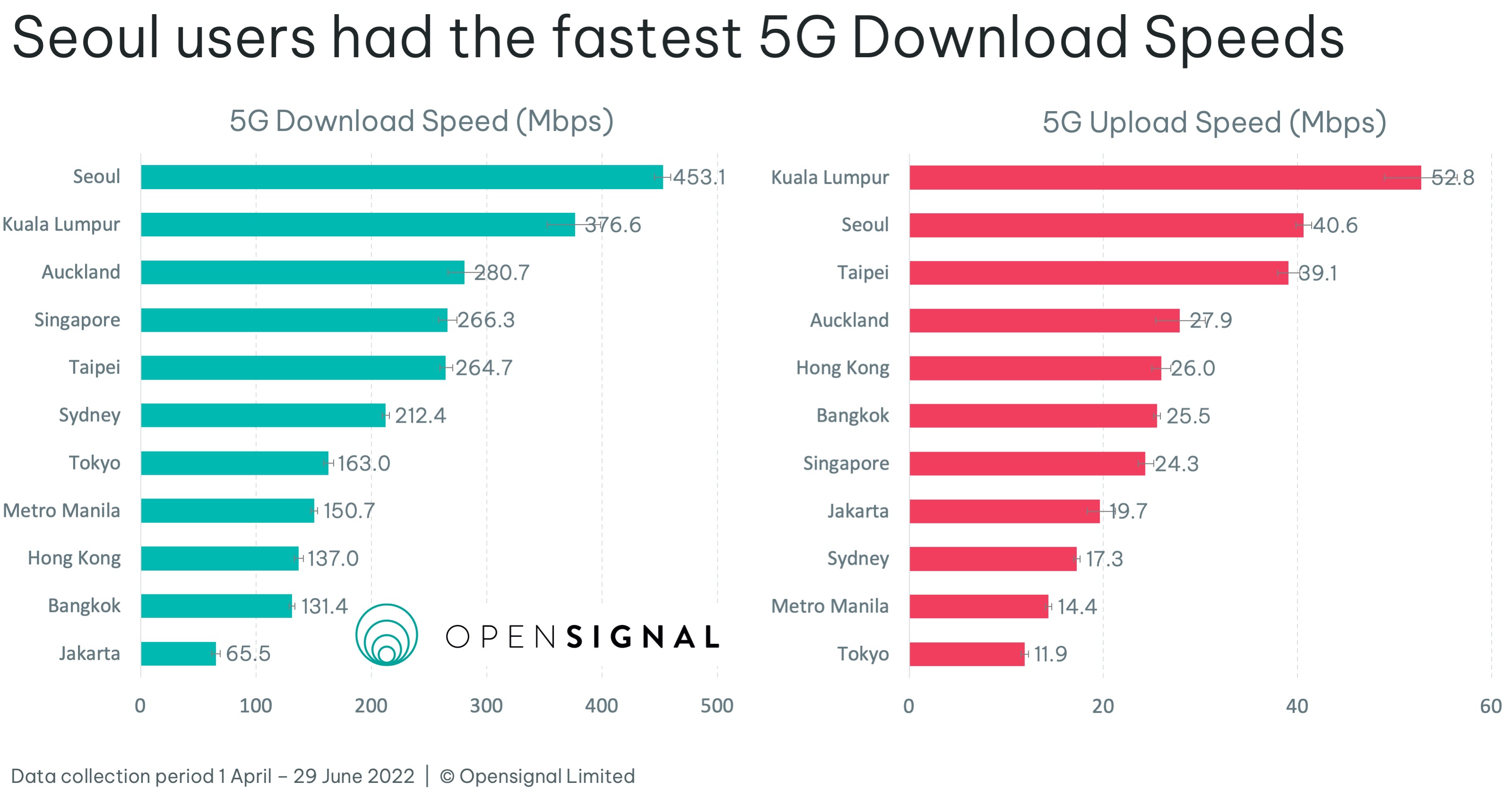5G speeds: Singapore and New Zealand thump Australia, new report reveals
Latest Opensignal survey shows how varied 5G speeds can be

As it has slowly rolled out over the last few years, 5G cellular technology has promised to improve users’ mobile internet experience with stronger connectivity and super-fast speeds, but is it really doing so where you live?
If you’re located in Australia, the answer is ‘probably not’.
A new report by independent communication analyst Opensignal has examined 5G speeds in 11 of the largest cities in the Asia Pacific region, and found Seoul to be leading the pack with speeds of 453.1Mbps on average.
That’s close to double the average 5G download speed in Sydney, which clocks in at 212.4Mbps according to Opensignal’s data. Sydney was also resoundingly beaten by other local rivals including Kuala Lumpur (376.6Mbps), Auckland (280.7Mbps) and Singapore (266.3Mbps).

For 5G to really be beneficial to mobile users, it needs to be widely available and offer faster speeds than what’s currently available through 4G networks.
Judged on those criteria, Opensignal’s analysis found Kuala Lumpur’s residents are getting the most out of 5G connectivity – it’s charging ahead, with 5G speeds that are 19 times higher than what local 4G networks provide. However, Malaysia’s success is largely attributed to its low number of users, which puts less strain on the network.
Other cities in the APAC region pale in comparison, with Auckland locals seeing 5G speeds that are on average only 6.4 times faster than 4G, while that number trickles down to 5.6 times faster for Singapore residents and 4.2 times faster for Sydneysiders.
Sign up for breaking news, reviews, opinion, top tech deals, and more.
When it comes to streaming video specifically, those in Metropolitan Manila got the greatest benefit. Opensignal calculated their 5G video experience to be 54% higher than what was available with 4G connectivity. Auckland residents streaming with 5G saw a 32% improvement, while Singapore gained a 23% uplift and Sydney saw 21%.
(Opensignal’s video experience metric measures things such as the time it takes a stream to start and instances of stalling or pausing across various video qualities and bitrates.)
The state of 5G in Australia
Despite Telstra, Optus and Vodafone continuing to expand their 5G networks, and Telstra’s 5G now reaching 75% of the population, Opensignal’s data found that the amount of 5G users who were able to connect to a 5G network was fairly low at just 19.8%.
Opensignal also quantified the reach of 5G by looking at the number of locations that users visited where they connected to 5G, out of the total locations they visited during the data-collection period. On a 10 point scale, Sydney’s 5G connectivity score was 4.7, far behind Seoul which took the lead with 7.6 points.
With 5G-capable handsets now widely available, Australia’s telcos are playing catch up as they roll out towers across the country. Its availability is still largely clustered around densely populated areas such as the capital cities, though even then there are exceptions – Darwin is still completely without 5G access, for example.
Telstra, Optus and Vodafone’s mobile plans now all include 5G access as standard, and you can check availability in your area by looking at Telstra, Optus and Vodafone’s coverage maps. Smaller providers including Mate, Spintel and Woolworths Mobile are newer entrants in the 5G space, and tend to offer cheaper alternatives than the big three.
Here’s a look at what those plans cost and offer:

Jasmine Gearie was previously an Ecommerce Editor at TechRadar Australia, with a primary focus on helping readers find the best mobile and NBN plans. During her time with TechRadar, she also reported on important telco news in Australia, and helped track down tech deals to help readers save money.